As part and parcel of owner-building our strawbale house, we spent four months living on-site in a caravan. That summer is now half a dozen years in the past, and I’d like to commemorate that time on my blog. This is the original manuscript of the article published in Grass Roots 251 in Feb/March 2019.
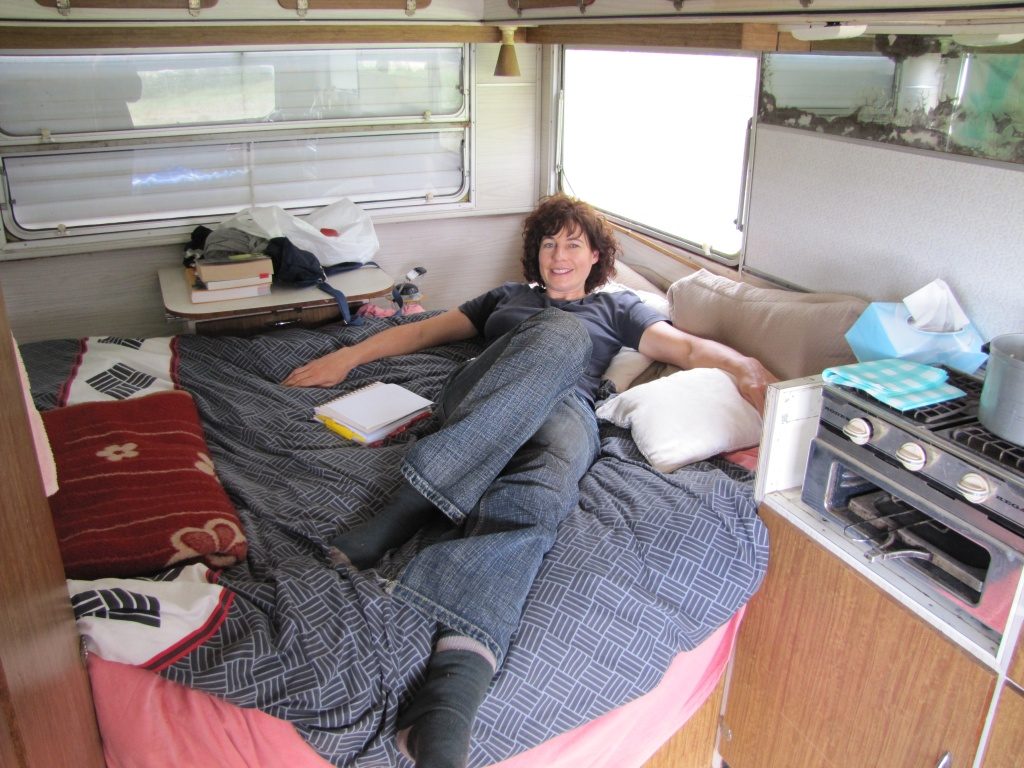
If you are building your own abode in the country, you may find it convenient to spend some time living in a caravan while getting the house habitable. It is generally not a good idea to ask your council for permission – it’s rather pointless, as councils around Australia are increasingly taking the view that the only place they want people in caravans is where at least $30 per night will be charged for the privilege. This is not compatible either with most owner-builder budgets (nor practical, since the whole point is to be on-site), or, to my way of thinking, with the civil liberties of private landholders wishing to peacefully enjoy their properties. Australia is fast legislating the fair go out of existence on many fronts.
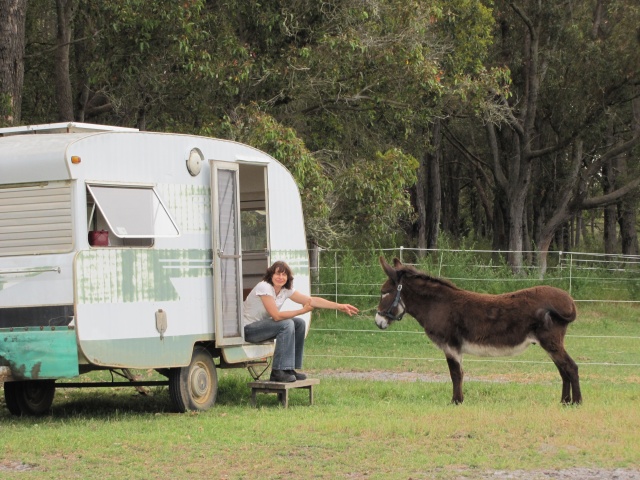
Many people still do use caravans or other temporary accommodation to live on-site during house construction, and if you can quietly swing it, it’s a good way to save money and time while engaged in a project that is notoriously demanding on both.
We weren’t going to do it, initially – we commuted from town every building day, half an hour each way, when we started our house, determined to go from one functional house to the next. But when a few curveballs were thrown our way in the middle of it all – a traffic accident that aggravated a back injury and resulted in down time, consequent delays in building, and a building site burglary – we gratefully accepted the loan of a caravan, and spent one summer living in it while getting our house from lock-up stage to the point where we could sleep in the house.
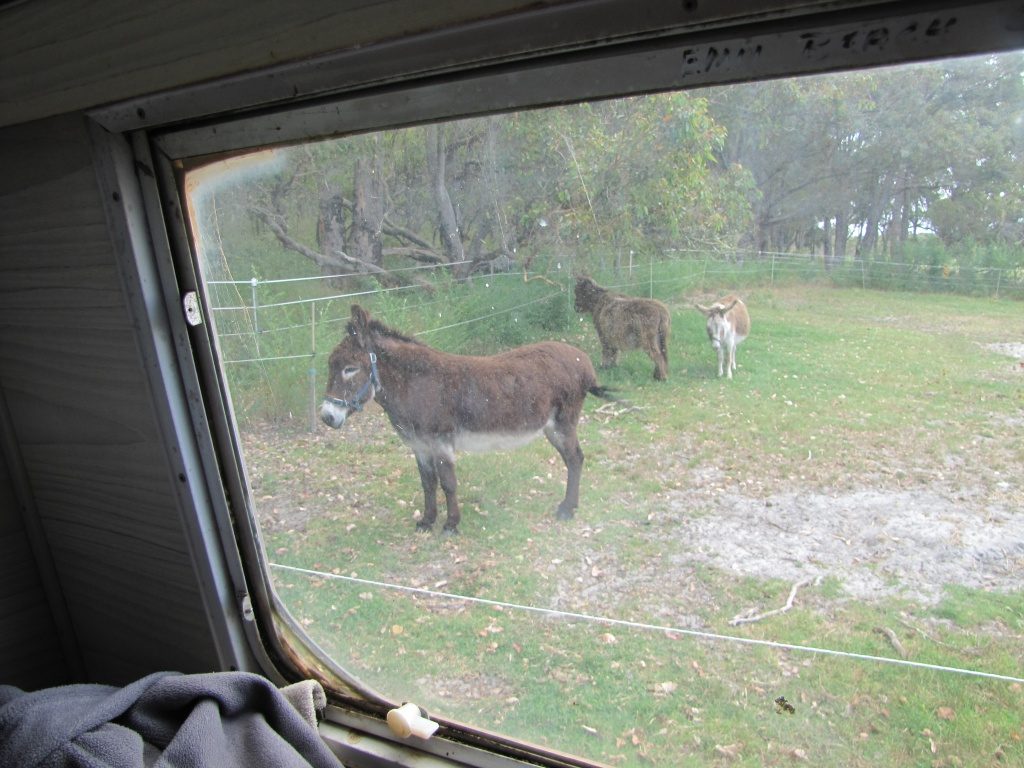
We look back on that summer six years ago with a fond nostalgia. It felt oddly like we were pioneering – washing ourselves in buckets by the rainwater tank, washing up similarly after cooking in the caravan, sleeping at night with the mopokes calling in the trees and the donkeys swaying our bed by scratching themselves against the caravan axle. Our generator ran our power tools and also my trusty twin tub washing machine, and washing was hung on the espalier wires of our embryonic orchard.

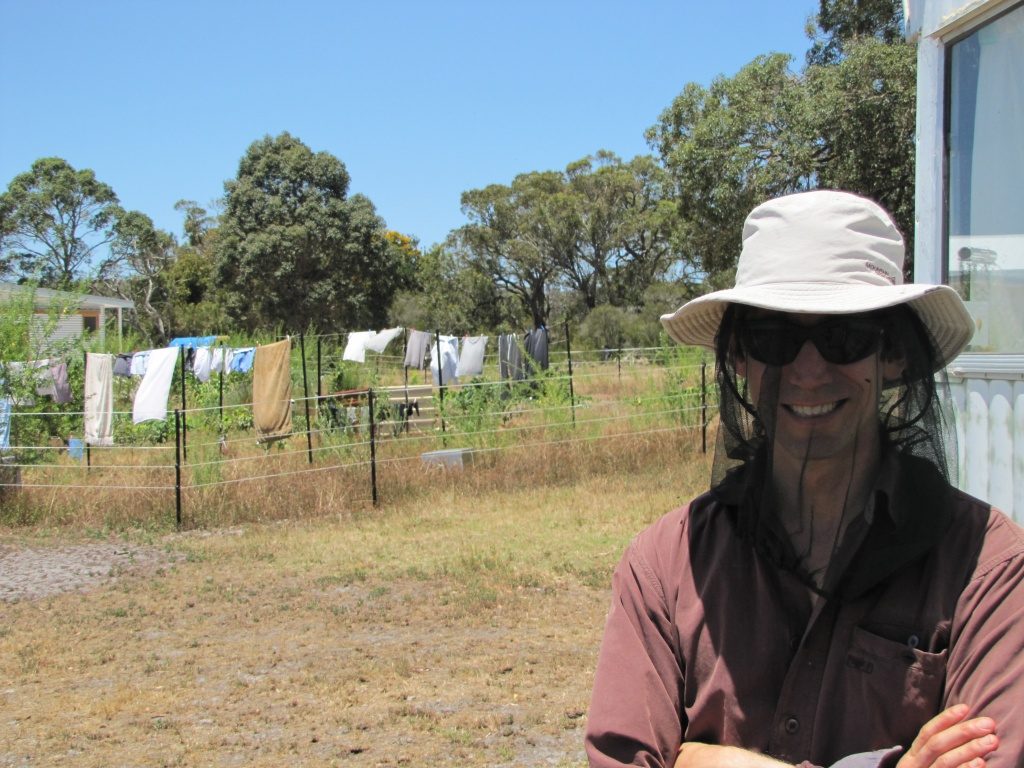
Organising Storage
We had a small household’s worth of furniture and general contents that needed a home before we could distribute it around the finished house later. A commercial storage unit was contemplated, but was another expense we didn’t need, and we worried about rodent, insect and moisture damage to our extensive book collection.
At lock-up, our house had all the ceilings installed, the wet areas plasterboarded and primed, a scratch coat on all the strawbale walls internally, and two plaster coats on the exterior – i.e. sealed and weatherproof. We now needed to complete the interior plasterboarding and lime plastering, seal the floors, tile the wet areas, and install the fixtures of two bathrooms and a kitchen. Also on the list was internal door hanging and painting, installing architraves and skirting boards, and making built-in cupboards and shelving.
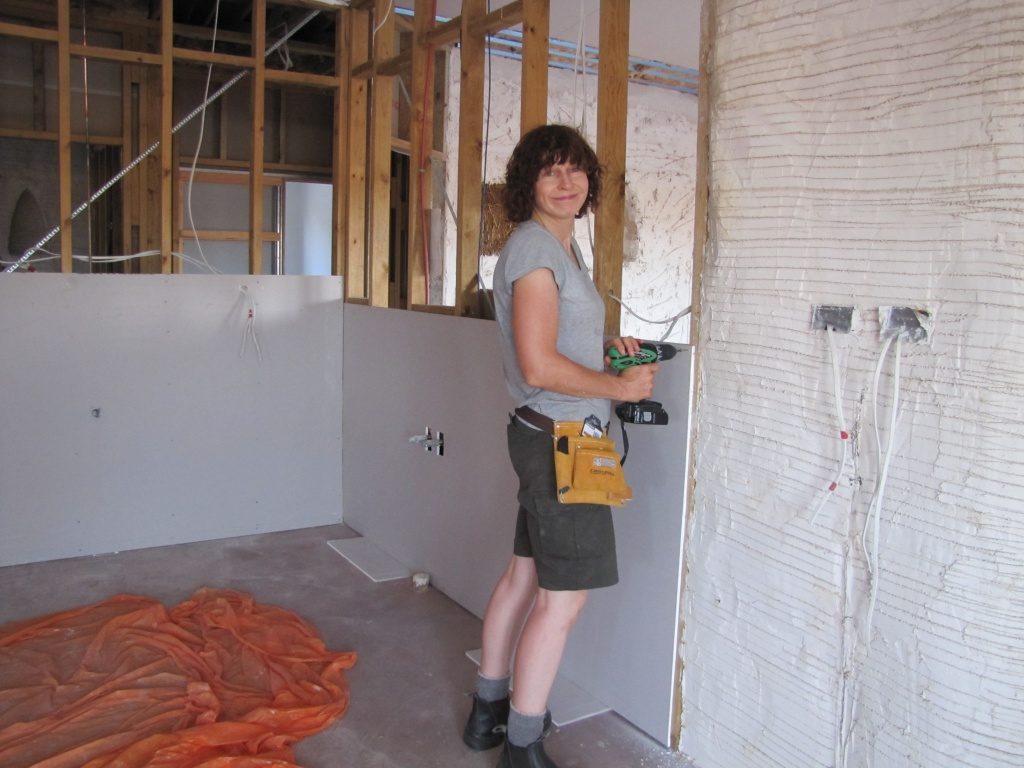
We decided to use one unfinished bedroom as a furniture store, and another to store boxes of books and household effects. The boxes were stacked as an island in the middle of the room, surrounded by rodent bait stations as we are rural and there were still some gaps in the house. We regularly inspected the book boxes to ensure nothing was nibbling at Charles Dickens and his friends.
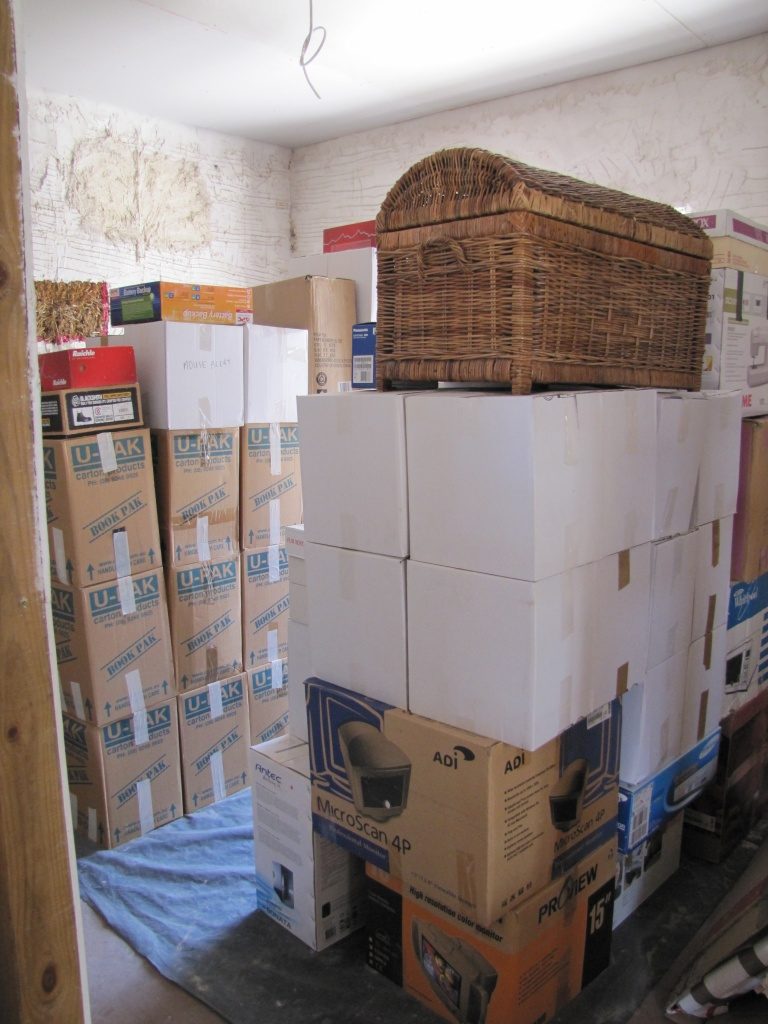
Portable Pantry
Without a kitchen, we needed a portable, rodent-and-insect-safe pantry in which to store our cooking staples, and used several lidded plastic storage tubs for this purpose. For space reasons, we kept these at the house and had just one small tub with immediate meal requirements in the caravan, which we took “shopping” to the house tubs as needed. Items requiring refrigeration lived in the small caravan fridge. There was also some fresh produce coming from our newly planted food garden.
Temporary Wardrobe
Casual clothes for immediate use were kept in the caravan wardrobe, while all our other clothes resided in suitcases in the “ultra clean area” – a completely plasterboarded and painted bathroom – along with kitchen equipment that didn’t fit in the caravan but was sometimes needed, stationery, paperwork etc.
Living In A Small Space
Our loan caravan was a small two-person model, with a double bed at one end, a padded seating bench across the other end, and an area in the middle with a small wardrobe on one side and a kitchenette opposite. The bed doubled as a space for daytime reading and using our laptops. The plastic tub with immediate supplies had to be kept on one side of the seating bench, as there was no other space for it. Dishes were put into a plastic washtub, which was ferried out to the tank for washing up. Clean dishes then went into another plastic tub.
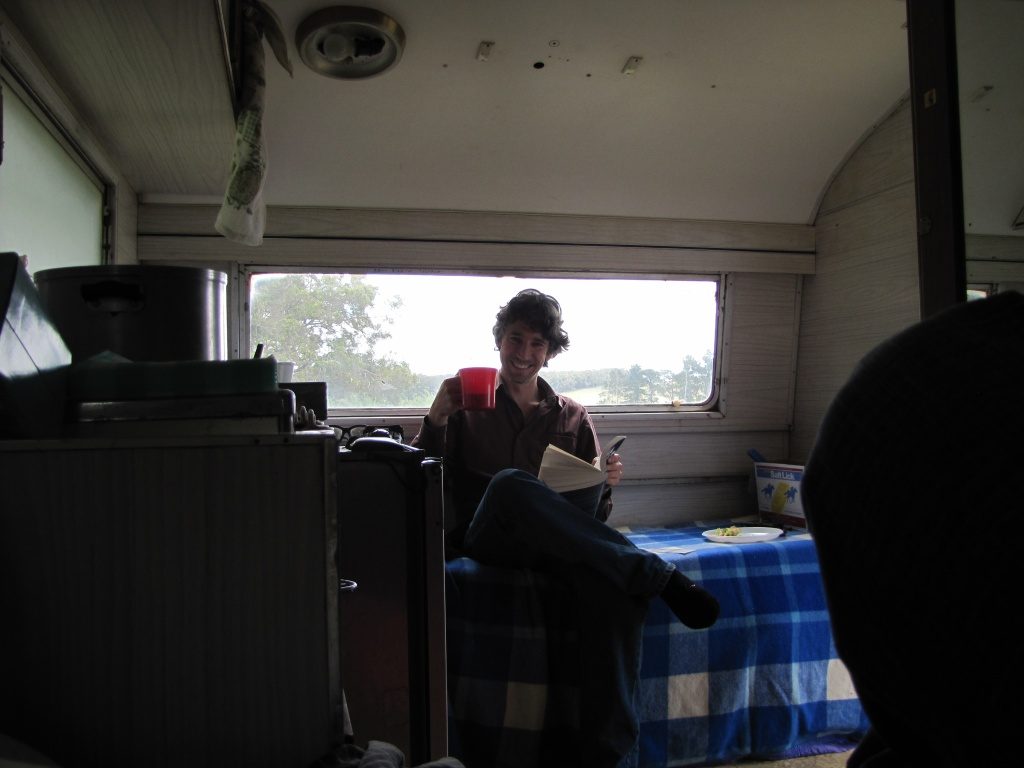
In a small space, you have to be very tidy and organised not to go crazy – everything has to have its spot, and return to that spot. Once a week we vacuumed the caravan, running a power cable from the generator. We like living in a clean space, and this made us feel more at home.

Breakfasts were fun. We usually had muesli and fruit, and the donkeys would appear the moment we opened the caravan door while breakfasting, and push enquiring heads through the doorway. They were interested not just in the apple cores, but also the mandarin and banana peels, and gave little hoots to encourage us to find such items for them.
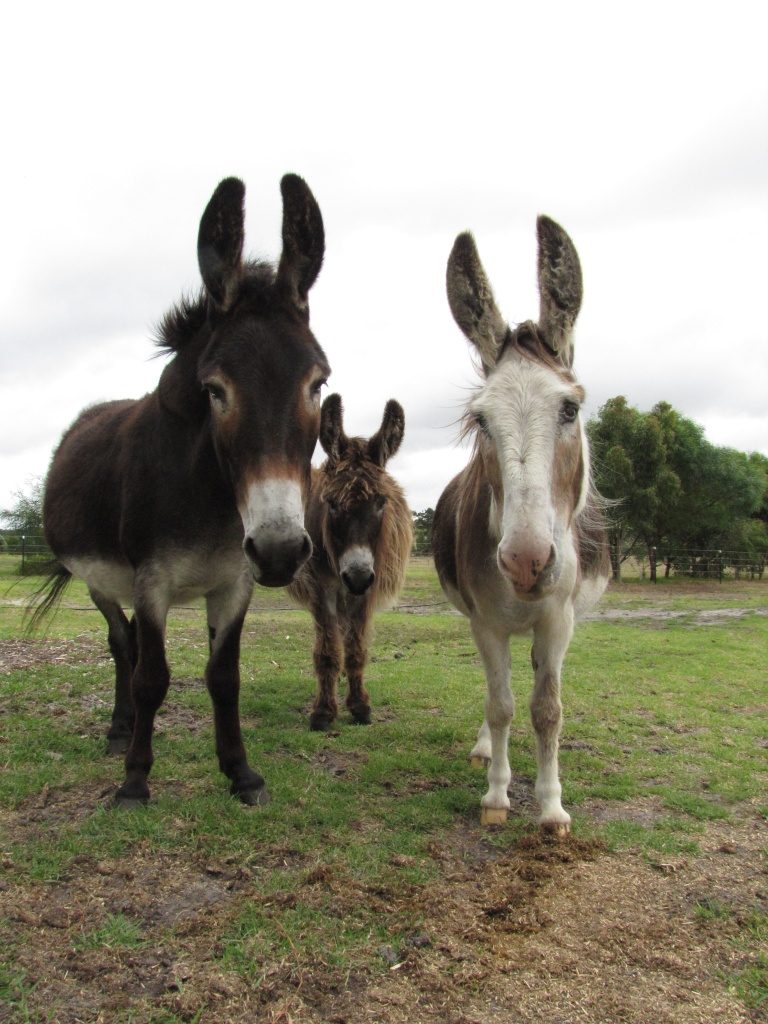
Office In A Shed
After Brett’s long-service leave was over, we had to set up an office for him so he could resume his graphic design work, which he did from home for his Melbourne employer. At this stage the off-grid solar-electric system had been installed in the shed, but the house was not yet live. We set up his office space in the shed, conveniently out of the way of house-finishing activities. We had a power cable to the main house and could now enjoy listening to music while working inside the house.
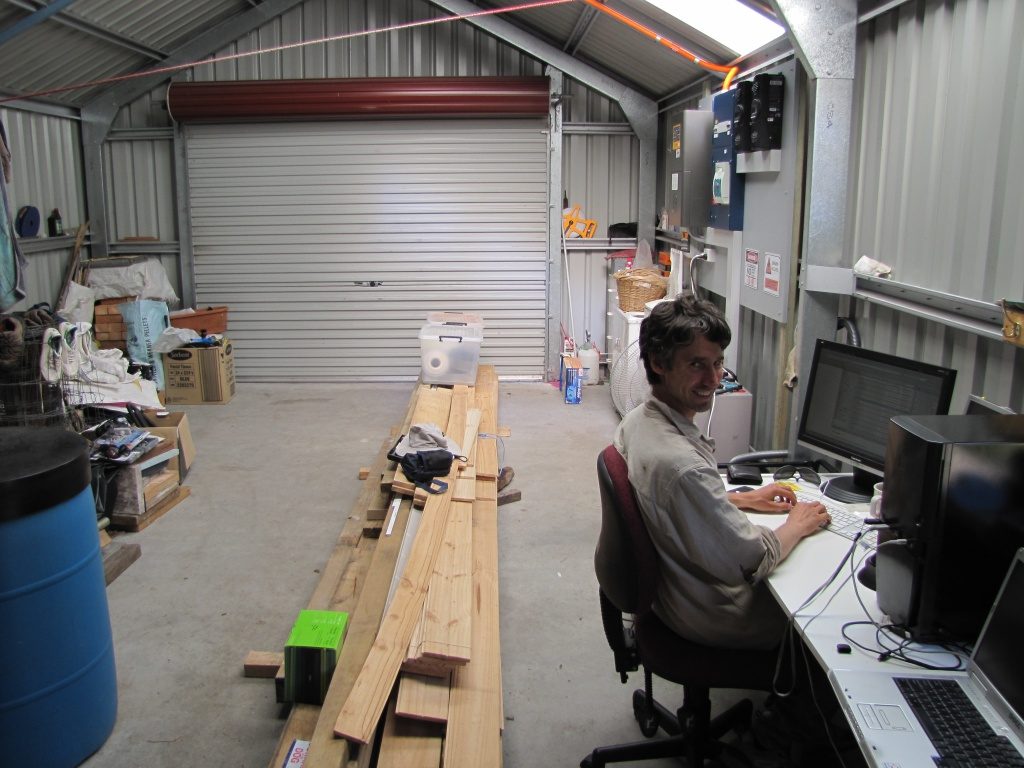
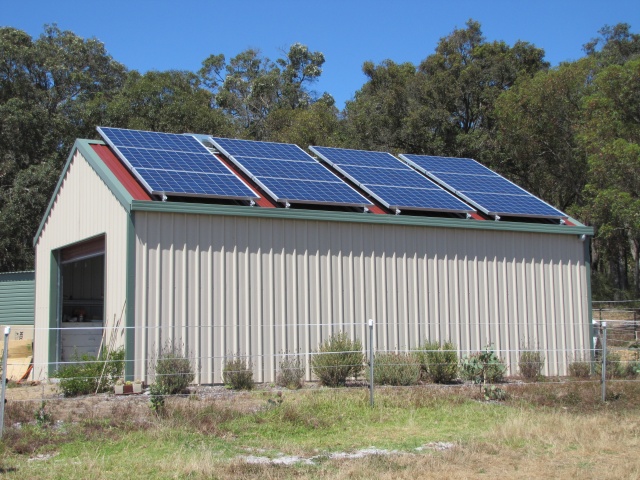
How Caravan Living Ended
As summer gave way to autumn, mice decided that the caravan was a nice spot to colonise. The caravan was not mouse-proof, and baiting/trapping had only limited success. I’m a light sleeper, and at night I could hear mice scrabbling inside the skin of the caravan walls. When one mouse started moving into our wardrobe, and bouncing around in it night after night like a miniature poltergeist, that was the end of a good night’s sleep for me. Also, the caravan interior was getting very cold at night with autumn descending. At this point we were yearning to sleep in our nice, warm, soft Queen-sized bed again – a bed the donkeys couldn’t rattle in the middle of the night. The home office was habitable now, so we decided to use it as temporary sleeping quarters while finishing the actual bedrooms.
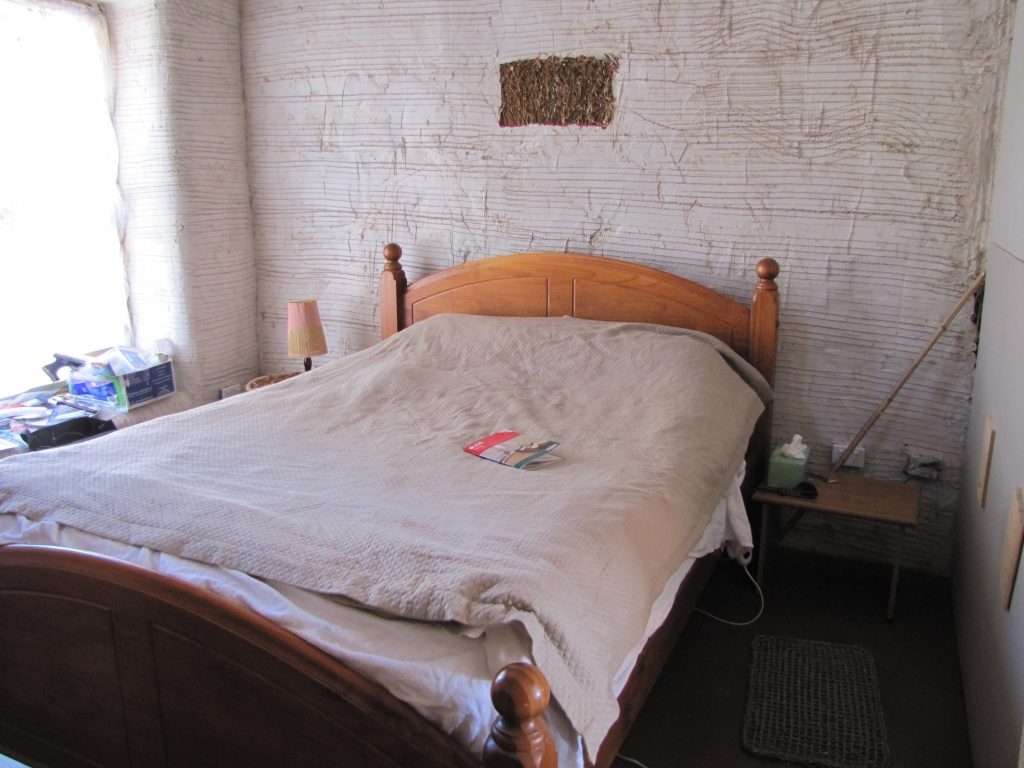
The caravan continued its duties as a kitchen until the house kitchen was installed (GR 219/220). The donkeys continued to visit whenever there was actual cooking. When there were no suitable fruit and vegetable scraps for them, we gave them a Weet-Bix each. For some reason, the dominant memory of our caravan days is that of three donkey faces poking into the caravan doorway inquisitively, looking for snacks and entertainment.
Should You Do It?
Regardless of what authorities think about the matter, living on-site when owner building results in significant savings of money, time and energy compared to continuing to live off-site and having to commute in. It is a commonsense thing to do, and becomes an adventure in improvisation you will remember for the rest of your life.
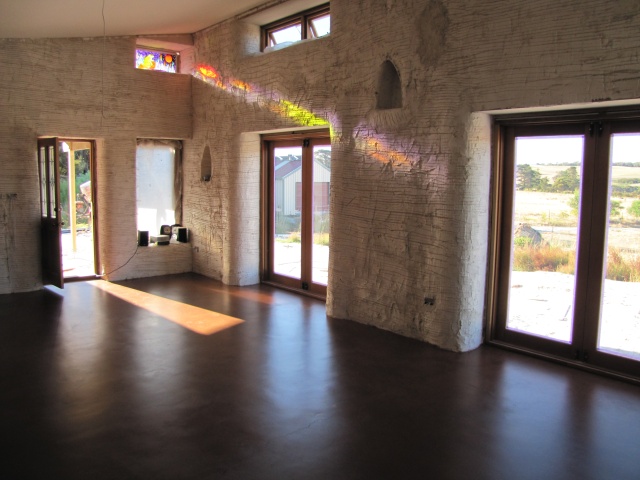



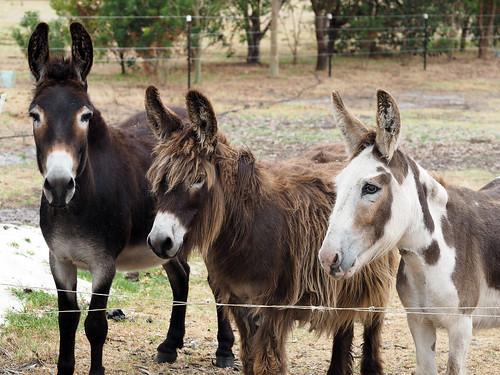


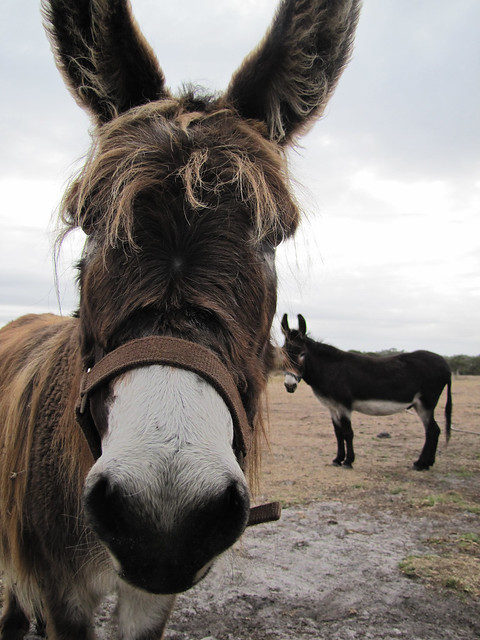
I wouldn’t have even thought permission was required from council in that situation. Anyway, I love the story arc of the three adorable donkeys! You’ve told it so well.
Well, that’s Australia for you! Sadly it’s true for many areas, including our local one. Glad you enjoyed the donkey story. Sorry about the time it took to get back to you – haven’t been here in a while! 🙂
And did you happen to take out a membership on CF but not post? (…the name!) We’d love to hear from you. It seems the majority of people signing up for this illustrious forum have taken a vow of silence…